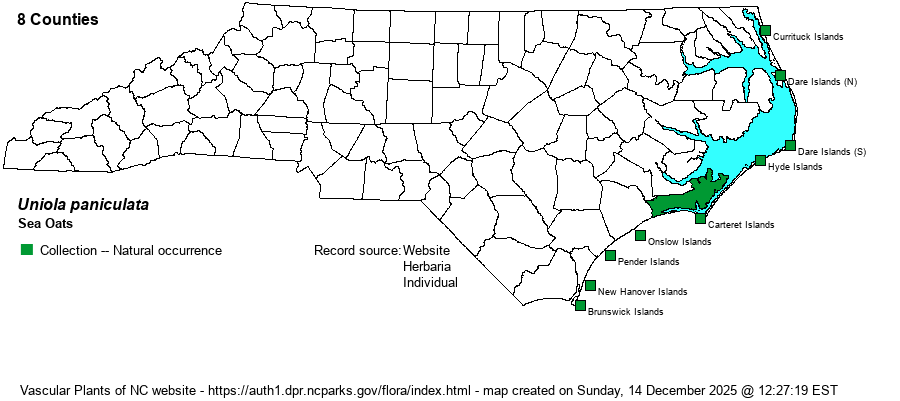| Author | L. | |
| Distribution | Almost restricted to the Outer Banks and barrier islands; rare on the adjacent mainland.
Maritime, southeastern VA to FL, TX, and Mex.; Bahamas, West Indies. | |
| Abundance | Common to abundant. It acts as a sand-binder. | |
| Habitat | Unstable and semistable dunes, dune fields, and interdune swales. |
| Phenology | Flowering and fruiting June-October. | |
| Identification | Sea Oats is one of the characteristic plants of our seashore dunes, extremely valuable for its sand-holding ability. It is one of our most easily identified grasses. Plants form patches or rows via long rhizomes, sending up many leaves 1-2 feet long and about 1 cm wide. Flowering stems routinely reach 6-7 feet, the large terminal inflorescence with arching branches. Spikelets are pale brown to tan and look vaguely like cultivated oats, each with up to 30 florets. Some people use the species in dried floral arrangements, though in many places along the coast it is or may be illegal to pick the plants, especially as doing so (as well as walking on dunes that may trample plants) can cause dunes to become more unstable. | |
| Taxonomic Comments | Other former members of this genus now are in Chasmanthium.
| |
| Other Common Name(s) | None | |
| State Rank | S4 | |
| Global Rank | G5 | |
| State Status | | |
| US Status | | |
| USACE-agcp | FACU link |
| USACE-emp | FACU link |

